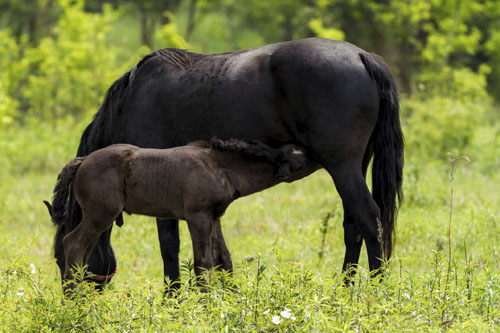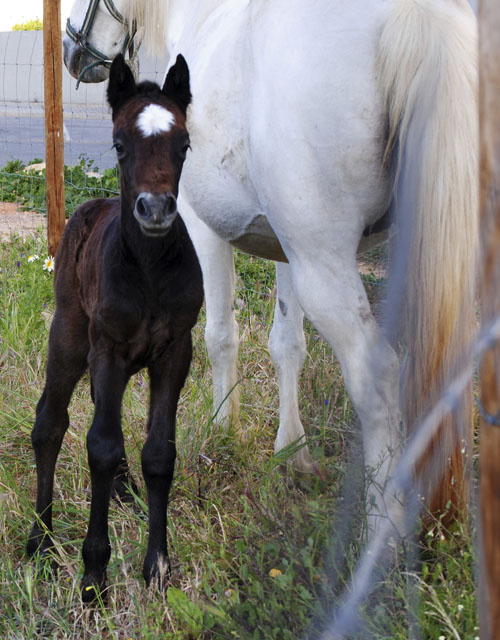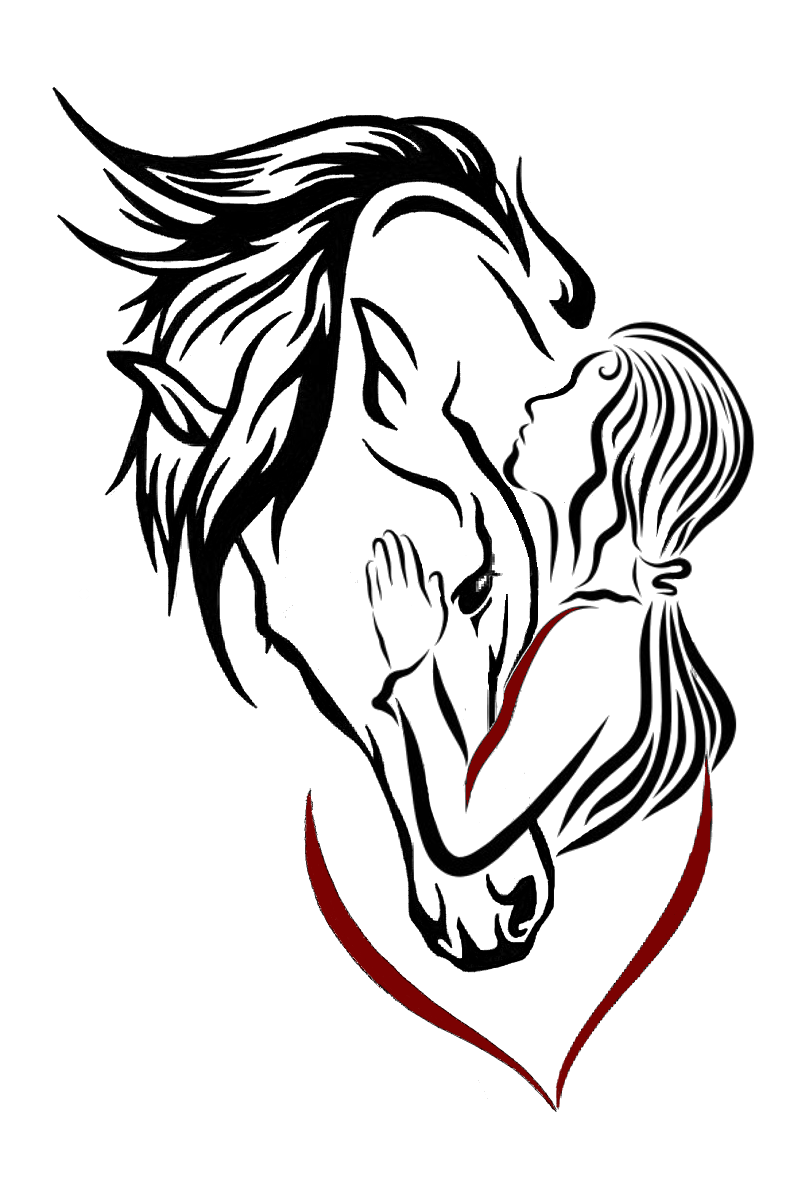It’s Time to Re-Think Early Weaning of Horses

Separating them too soon benefits no one.

For the most part, the symbiotic relationship between the domestic horse and humankind works out well. The horse gets immunization from fatal diseases, readily available food and protection from predators. (One can also argue farrier care and deworming, but neither of those would be essential if we hadn’t domesticated the horse in the first place.) Humans benefit from the partnership with horse power for transportation and agriculture, recreation, companionship and even as a source of food.
But our stewardship is not without error. Overlooking outright cruelty, our caretaking has led to health issues that seldom occurred in the horse’s natural state, including colic, ulcers and laminitis. Many of our decisions regarding the maintenance of horses have been made with our own convenience at the forefront. One that receives little discussion is weaning.
If you’ve seen photos of working draft horses in the 19th century, you may have seen a team engaged in some farm activity with a large foal tied to his dam’s harness.
My mentor (born in 1917) recalled his father plowing Vermont roads in winter with a six-horse team plus one or two foals alongside. Foals remained with their dams for extended periods of time, and breeding texts from that period recommended six to eight months of lactation as the minimum.
Even into the 1960s, it was rare to see a weanling under the age of six months. If they went to the show, their dams were held outside the ring in varying states of frenzy. Around that time, a study came out that demonstrated a mare’s milk supply decreased sharply after the third month of lactation. Although the study didn’t recommend early weaning, breeders seemed to almost universally decided it would be in the foal’s best interest to be weaned at three to four months and be fed supplemental grain.
Initially, this technique appeared to be a good decision. Early weaned foals were bigger and fatter than their still nursing counterparts of the same age. The few holdouts for extended lactation soon became convinced and joined the early weaning faction.
While there is little published research to either support or refute early weaning, recent studies are now coming down, albeit tentatively, on the side of delayed weaning. Let’s call “early” those foals weaned at three to four months, and “delayed” as six months or later. We’ll look at the arguments for early weaning and see what science now has to say.
BIGGER, FATTER FOALS.
Almost immediately after the 1960s lactation study, creep feeding became established as the means of compensating for the mare?s decreasing milk output. (“Creep feeding” refers to any type construction either in a field or a stall that allows the foal to have access to grain, but prevents the mare from obtaining it.) High-energy grains were often supplied free-choice to both nursing and weaned foals.

It was not long after this practice became widespread when the first reports of unusual lameness in foals began to appear. Eventually lumped into the broad category of developmental orthopedic diseases (DOD), they’ve never been irrefutably linked to creep feeding. Still, the index of suspicion is high, especially since creep feeding, DOD and increasingly accurate diagnostic tools all emerged practically simultaneously.
Early weaning and supplemental grain does result in fatter foals and rapid growth. These foals do reach their final height faster, but they don’t grow any larger than their delayed weaning counterparts.
A well-designed study by the University of Kentucky compared groups of Quarter Horse and Thoroughbred foals weaned at 4.5 and 6 months of age. It found that by 224 days of age, there was no difference in withers height. However, there was a statistically significant difference in cannon-bone circumference and one measure of bone density, with the earlier weaned foals demonstrating losses in both areas.
MARE’S LOSING WEIGHT.
Assuming attention to dental care and monitoring of fecal egg counts, the primary reason mares will lose weight during lactation is inadequate nutritional intake. In other words, if a nursing mare is getting thin, she’s not being fed enough. Maintaining adequate body fat in a broodmare should start even before conception with her diet adjusted in the last trimester of pregnancy to allow her to foal with a body condition score of 7.
A lactating mare requires between 2 to 3% of her body weight per day in forage and concentrates (compared to 1.5 to 2% for a horse at maintenance).With free-choice high-quality forage, be it pasture or hay, she should easily obtain that much nutrition and maintain her weight, even while nursing a large foal. Not only are you putting your foal?s joints and bones at risk, but it is false economy to think buying “designer” foal grain is cheaper than delayed weaning with good hay or pasture.
The science here is clear: If your mare is thin, don’t wean the foal, feed the mare.
TRAINING ISSUES. Renowned California veterinarian and lecturer Dr. Robert Miller is a strong proponent of initiating human contact and foal education in the neonatal period. His philosophy of imprint training recommends intervention long before weaning. Independent evaluation of his methods has concluded the young foal is just as capable of learning and retaining many of the imprinted exposures even if they are not introduced immediately after birth.
It stands to reason foals will be more comfortable with the learning process while still with their dams. It’s far easier to teach a foal to pick up his foot if He’s leaning against his calmly grazing dam. Likewise, the first haltering goes much more smoothly if the foal is young and at his mother’s reassuring side.
Prior to weaning, the foal should stand quietly to be haltered, lead without resistance, be immunized, dewormed, and reasonably well-mannered for a professional farrier. Yes, you might have to make the effort of walking into the pasture or bringing the mare and foal into the barn to provide these essential training and health interventions. If that’s too much trouble, you might want to ask yourself why you wanted this foal.
NEED MORE REASONS?
Foals in the wild remain with their mothers for extended periods. If the dam is pregnant, she will wean her foal herself at about 10 months of age, allowing for the production of colostrum for the new foal she’s carrying.
If she isn’t pregnant, she may permit her foal to nurse well into the yearling year. (If she’s got a cheeky, randy colt by her side, the herd stallion will likely run him off into a bachelor herd at some point in his yearling year.) In a study of zebras in the wild, natural weaning occurred in pregnant zebras between days 243 and 355 after foaling.
Milk production in mares is a “demand-supply” feature. If the demand is there, she will continue to supply it. On large preserves for Przewalski’s, the last truly “wild” horses, foals have been observed remaining with their dams and nursing for up to two years.
As the volume of milk decreases by the third month, its mineral profile also changes. This is believed to be an evolutionary incentive to encourage foals to learn to obtain foodstuffs on their own and gradually establish independence.? The key word here is “gradually.”
Research has shown that early weaned foals, especially those with a high proportion of grain in their ration coupled with increased confinement and isolation from peers, are at high risk for developing stereotypic behaviors like cribbing/wind-sucking, weaving and stall-walking as the horse grows. These behaviors have not been observed in feral horses.
The horse has survived for millions of years. It’s only been in the last few thousand that man has begun meddling with it. That’s the evolutionary equivalent of a blink of an eye.
We’re slowly recognizing our well-intentioned stewardship has caused us to make errors in our care-giving and, in fact, we now realize that, for the most part, the closer we maintain horses to their natural state, the better off they are. When it comes to weaning, maybe it’s time we park our hubris on the shelf and admit we were wrong.
SIDEBARS:
Developmental Orthopedic Disease
DOD includes osteochondrosis dessicans (OCD-cartilage defects), physitis (joint inflammation), angular and flexural limb deformities and cervical malformations (wobblers). Despite considerable research, there’s no one proven cause for any of these. That said, genetic predisposition is a likely cause for some of the diseases in some horses. That means if the environmental conditions are right, the problem will develop, but not in every foal.
After the creep-feeding boom, followed closely by the DOD explosion, excess protein was blamed as the cause. It was circulated so widely at the time that even today some breeders still quote that conclusion. The theory has long been discredited. Current theories include:
1. Rapid growth due to overfeeding. This is most likely following an illness or lack of nutrition, followed by abundant food.
2. Obesity. It is felt the stress of excess weight on immature cartilage causes it to shear off and/or develop imperfections (OCD).
3. Intense episodic exercise. Cooped-up foals only permitted intermittent freedom may damage the growth surfaces of long bones in their enthusiasm to blow off steam.
4. Mineral imbalance. Initially a copper deficiency was implicated, as supplementing copper in mares and foals seemed to decrease the incidence of OCD. That’s now known that the entire mineral profile needs to considered and balanced. An investigation in Germany of 629 Hanoverians on 83 farms demonstrated the necessity of forage testing and mineral balancing. The foals were all fed supplemental, mineral-added grain shared with their dams. The diets weren’t balanced to the forage and displayed both excesses and deficiencies in some minerals in the total diet. X-rays revealed 226 foals had OCD lesions between five and 10 months of age.
5. High glycemic diets. Kentucky Equine Research published their investigation of 218 Thoroughbred weanlings on six farms, all of whom were fed a foal-specific concentrate, either texturized sweet feed or molasses-bound pellets, testing between 40-50% NSC. There was an almost linear correlation between the glycemic response to the diet and the development of OCD. As further evidence of the harm caused by overfeeding, the researchers found the farms with the heaviest foals, 115% above “normal” weight for age had the highest incidence of OCD. Interestingly, on the one farm where the foals were underweight – 97% of normal – no OCD was found.
Don’t Show The Foal
With the exception of the neonatal period, foals are at their most vulnerable in the period after weaning. The immunity they received from the mare’s colostrum has waned and their own immune system hasn’t begun to reach peak efficiency. At a show, they’ll be exposed to many foreign bacteria and viruses and at a time when they haven’t overcome the stressors of weaning. The new experiences of trailering, a strange environment, and unfamiliar horses all amplify that stress, making them highly susceptible to illness and injury.
Although the acclaim and money up for grabs in some foal futurities is tempting, don’t sell your foal’s health for it. All blue ribbons eventually turn purple with age, but you may have this foal for the next 30 years. And the mare who carried that foal, nursed it, protected it and then lost it to weaning deserves a year’s vacation from competition for all her effort.
